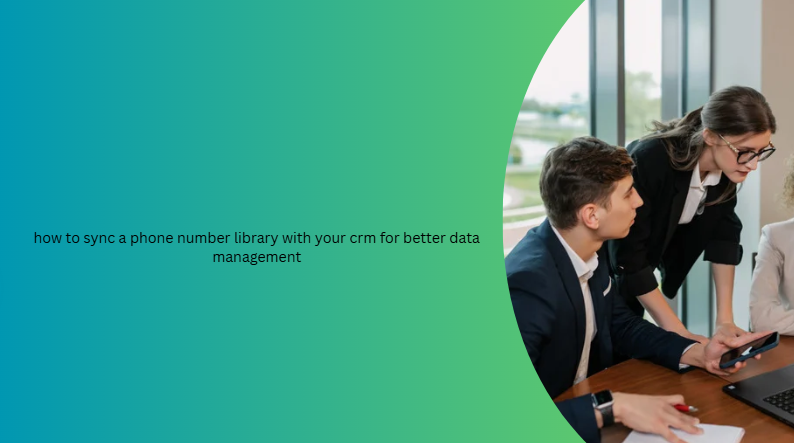Choosing the Right Tools and Integration Methods for Effective Syncing
Before attempting to sync your phone number library with your CRM, it’s essential to evaluate the available tools and integration methods that best suit your business needs. Most modern CRMs, such as Salesforce, HubSpot, and Zoho CRM, offer native integration options or allow third-party apps like Zapier, Integromat, and PieSync to act as intermediaries. These tools can automate the process, mapping data fields between your phone number library and CRM to ensure consistency. However, before selecting phone number library a tool, you must consider factors such as data security, customization capabilities, ease of setup, and ongoing maintenance. For example, if your phone number library is stored in a spreadsheet or Google Contacts, some integrations may require data cleaning and formatting before syncing to avoid errors. Businesses handling large volumes of contacts should also look for solutions that offer bulk sync and duplicate prevention features. Ultimately, the choice of integration method will influence how seamlessly the process works and how much manual intervention will be required moving forward.

Preparing Your Data for a Smooth and Accurate Sync Process
Even with the best integration tools, syncing will fail if your phone number library data is messy, outdated, or inconsistently formatted. Preparation involves a thorough data audit to identify incomplete records, duplicate entries, and formatting discrepancies. For instance, international phone numbers should follow a standardized format, including country codes, to ensure they sync properly into the CRM fields. You should also remove inactive or irrelevant contacts, as syncing them will only clutter your CRM and hinder segmentation efforts. Tagging or categorizing contacts before syncing can be beneficial, especially for businesses that plan to run targeted campaigns later. This categorization might include lead stage, location, industry, or interaction history. Once the cleanup is complete, running a test sync with a small batch of contacts can help identify mapping issues, missing fields, or unexpected data overwrites. This pre-sync preparation significantly reduces the risk of integration errors and ensures that the final synced database is both reliable and actionable.
Executing the Sync and Ensuring Real-Time Data Updates
Once your data is ready and the right tool has been chosen, executing the sync between your phone number library and CRM should be done with a carefully monitored process. Begin by connecting your integration platform or enabling the CRM’s built-in sync feature, ensuring proper permissions are set to prevent accidental data loss. Field mapping is crucial here—matching the phone number fields, contact names, email addresses, and other relevant details from your library to corresponding CRM fields. If your integration tool supports two-way sync, enable it to allow changes in either system to reflect automatically in the other. During the initial sync, monitor for duplicates, mismatched fields, or missing entries. Many advanced tools provide logs or reports to track each synced record, allowing you to troubleshoot immediately. Once the sync is established, schedule automated real-time or periodic updates so that your sales and marketing teams always work with fresh information, eliminating the need for repetitive manual updates.
Maintaining Data Quality and Maximizing CRM Integration Benefits
Syncing your phone number library with your CRM is not a one-time task—it’s an ongoing process that requires continuous monitoring, optimization, and maintenance. Regularly reviewing your CRM data for accuracy ensures that errors do not accumulate over time. This includes checking for duplicate contacts, outdated phone numbers, or incomplete profiles. Implementing validation rules in your CRM can prevent bad data from entering the system in the first place. Additionally, training your staff on proper data entry practices and how to use the integration tools effectively will minimize user errors. Over time, the integration will allow you to leverage CRM features like segmentation, automated follow-ups, personalized marketing campaigns, and detailed analytics on customer engagement. These insights can guide strategic decisions, improve customer experiences, and boost conversion rates. Ultimately, a well-maintained sync between your phone number library and CRM transforms static contact data into a powerful asset for driving business growth and fostering long-term relationships.